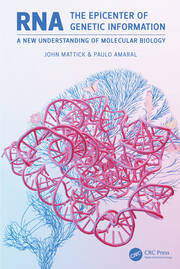Michael J. Behe's Blog, page 88
March 31, 2022
Those awful comb jellies betray the Darwinians again: They were even more complex than feared, starting at maybe 635 million years ago
They’re said to have appeared between 634 and 604 million years ago (Peterson and Butterfield, 2005) and figure in the Cambrian Explosion. Darwinians have been trying to Cancel the Cambrian Explosion since practically forever but it keeps coming back into the fact base:
Ctenophores Get Even More Complex
Comb jellies (ctenophores) are claimed by some evolutionists to be the first multicellular animals, emerging even before sponges! (See here for more.) But look at all the design features these small marine animals have: a nerve network, locomotion, digestion, and iridescent flashing lights in their eight “comb rows” of cilia. In 2018, Casey Luskin noted that over 1,200 homology groups (groups of genes that are similar and unique to a homologous group) would be required for the origin of the group that includes ctenophores. Now, the team that in 2019 brought to light one of the required genes for comb rows has doubled the complexity, and with it, multiplied the headaches for evolution.
In 2019, we described how Jokura et al. in Current Biology had identified a gene named CTEN064 that was “required to orient each cilium within the ‘compartmenting lamellae’ that hold the comb rows together.” Knockout experiments showed that without this gene, the comb jellies could not swim. Now, in a new follow-up study published in bioRxiv, Jokura’s team announced the discovery of another required gene they call CTEN189. Without this gene, the cilia become disoriented, out of sync, and disconnected from the compartmenting lamellae (CL). Of particular interest, this protein acts at the opposite end of the CL — the distal end — as opposed to CTEN064 which localizes to the proximal end. This struck the researchers as a kind of “two-story building” arrangement
David Coppedge, “Cambrian Explosion: More Woes and Dodges” at Evolution News and Science Today (David Coppedge)
You may also wish to read: Can the Cambrian Explosion be explained away by the earlier Ediacaran Explosion? David Klinghoffer: Lukas Ruegger is the personable new intelligent design “explainer” whose videos take an approach similar to Khan Academy’s. The latter’s offering on evolution is replete with junk science, as Casey Luskin has detailed. Ruegger’s treatment of the subject is much better, and I appreciate his clarity and brevity.
Copyright © 2022 Uncommon Descent . This Feed is for personal non-commercial use only. If you are not reading this material in your news aggregator, the site you are looking at is guilty of copyright infringement UNLESS EXPLICIT PERMISSION OTHERWISE HAS BEEN GIVEN. Please contact legal@uncommondescent.com so we can take legal action immediately.Plugin by Taragana
As the Babylon Bee staff wait it out in Twitter Jail…
They write…
How To Survive Inflation If You’re A Pathetic Poor Person
Here’s How 14 Different News Outlets Covered The Will Smith Slap (from the most trusted name in fake news)
Twitter Suspends The Bee But Does Nothing About These Crazies
“Daily Wire Hits Back Against Woke Feminine Products With ‘Jeremy’s Tampons’” Daily Wire has struck back at another woke industry, this time introducing a competitor to progressive feminine hygiene product companies like Always and Tampax with the new, anti-woke conservative Jeremy’s Tampons.
You may also wish to read: The Babylon Bee’s Twitter Account Was Suspended, But That Made Its Story Go Viral “If Twitter’s goal had been to remove the harmful content, it backfired spectacularly. That original tweet, which was posted on March 15, had largely flown under the radar – yet when news that the parody site’s account was suspended, the tweet suddenly went viral.”
Look, it’s an updated version of “Banned in Boston,” right?
Also, the Bee is selling “The Bee’s Last Tweet” as an NFT (a non-fungible token) at Deep Red Sky for $283. Only 3189 are available.

As the Babylon Bee staff wait it out in Twitter Jail…
They write…
How To Survive Inflation If You’re A Pathetic Poor Person
Here’s How 14 Different News Outlets Covered The Will Smith Slap
Twitter Suspends The Bee But Does Nothing About These Crazies
Daily Wire Hits Back Against Woke Feminine Products With ‘Jeremy’s Tampons’ Daily Wire has struck back at another woke industry, this time introducing a competitor to progressive feminine hygiene product companies like Always and Tampax with the new, anti-woke conservative Jeremy’s Tampons.
You may also wish to read: The Babylon Bee’s Twitter Account Was Suspended, But That Made Its Story Go Viral “If Twitter’s goal had been to remove the harmful content, it backfired spectacularly. That original tweet, which was posted on March 15, had largely flown under the radar – yet when news that the parody site’s account was suspended, the tweet suddenly went viral.”
Look, it’s an updated version of “Banned in Boston,” right?
The Bee is selling “The Bee’s Last Tweet” as an NFT (a non-fungible token) at Deep Red Sky for $283. Only 3189 are available.
More Bee:
From the Babylon Bee (still in Twitter jail)
This stuff is not our usual line of coverage. But in these strange times — when Woke American billionaires tell us all when we may and may not laugh — you might be missing the Bee’s sendup of some of the most asinine upperclassmen in Western history. So here’s your fix.
and
You may also wish to laugh your way through: The Babylon Bee is in Twitter Jail… For your Saturday evening amusement, here are some of their latest stories, including Adam Confused By New Creature God Put In Garden As He Is Not A Biologist.
Copyright © 2022 Uncommon Descent . This Feed is for personal non-commercial use only. If you are not reading this material in your news aggregator, the site you are looking at is guilty of copyright infringement UNLESS EXPLICIT PERMISSION OTHERWISE HAS BEEN GIVEN. Please contact legal@uncommondescent.com so we can take legal action immediately.Plugin by Taragana
Confounding scientists for decades, RNA switches “on” and “off”
Unlike anything we know in the real world, all this complex machinery that confounds us just somehow, rather quickly, fell into place:
Similar to a light switch, RNA switches (called riboswitches) determine which genes turn “on” and “off.” Although this may seem like a simple process, the inner workings of these switches have confounded biologists for decades.
Now researchers led by Northwestern University and the University at Albany discovered one part of RNA smoothly invades and displaces another part of the same RNA, enabling the structure to rapidly and dramatically change shape. Called “strand displacement,” this mechanism appears to switch genetic expression from “on” to “off.”
Amanda Morris, “Unprecedented videos show RNA switching ‘on’ and ‘off’” at Northwestern Now (March 28, 2022)
The paper is open access.
You may also wish to read: Forthcoming book: “RNA is the cornerstone of cell biology” Remember the people who used to say, of their DNA, “This is me”? Didn’t wear well, that.
Copyright © 2022 Uncommon Descent . This Feed is for personal non-commercial use only. If you are not reading this material in your news aggregator, the site you are looking at is guilty of copyright infringement UNLESS EXPLICIT PERMISSION OTHERWISE HAS BEEN GIVEN. Please contact legal@uncommondescent.com so we can take legal action immediately.Plugin by Taragana
Ah, A real-world term for former “junk DNA”
And the winner is “genomic dark matter”:
“Most DNA in the human genome still has unknown functions and is referred to as “genomic dark matter.” Recent work has centered on uncovering key roles for this DNA, which is mainly derived from transposable elements (TEs) that were once mobile and invaded our genome. TEs are now being unveiled to serve not only as gene regulatory elements, but also as self-derived nucleic acids that can be sensed by the human innate immune system to induce anti-viral type I interferons. Assigning function to the dark matter of our genome is a cutting-edge area of research, yet a major caveat in this field is that this enigmatic DNA often lies within unresolved parts of the genome. Genome gaps encompass satellite repeat arrays, ribosomal gene clusters, and regions of segmental duplications that represent an unexplored dimension of human population variation, impacting health and disease. With their highly repetitive nature, unresolved regions are a black box in terms of their sequence and activity. Now, with ultra-long Oxford Nanopore sequencing, the T2T [telomere-to-temlomere] Consortium has been able to resolve gaps even across centromeres that are hotbeds of tandem satellite arrays. In the new T2T complete reference from CHM13hTERT cells with a normal karyotype, repetitive elements are found to comprise more of the genome than previously thought, with satellite and simple repeats particularly underestimated. But do we have evidence that dark matter can contribute to disease variation? Yes, indeed, several recent studies have shed light on how structural variation in TEs impacts on gene expression differences in disease settings. Our own unpublished recent work pinpoints satellite repeat arrays as platforms for the regulation of normal developmental fate transitions. The initial T2T data and follow-up complete assemblies of more genomes will allow us and others to investigate how previously unresolved dark matter DNA can vary in the human population. Studies assessing how repetitive RNA shapes 3D genome organization will also benefit from the resolved T2T reference sequences. Future breakthroughs building on the T2T initiative will ultimately lead to innovative therapies for diverse diseases but will also allow us to understand more broadly how genomes evolve, and how tissue-specific gene expression programs are controlled.”
Implications of the first complete human genome assembly Genome Res. Published in Advance March 31, 2022, doi:10.1101/gr.276723.122
The paper is open access.
You may also wish to read:
New use for “junk DNA”: Controlling fear Okay, why, until recently, did researchers think that “the majority of our genes were made up of junk DNA, which essentially didn’t do anything”? Because that vast sunken library of dead information (sheer randomness and waste) was a slam dunk for Darwinism, as politically powerful theistic evolutionist Francis Collins was quick to point out in The Language of God. (2007). If that’s not true, an argument for Darwinism is disconfirmed.
and
A new, useful, description for (former) junk DNA… ? “the large proportion of our genome that does not instruct our cells to form proteins” The phrase is a bit longish, of course, but concision is usually a product of usage. It’s better than “non-coding DNA” because it’s more specific and limited as a privative. That is, there is a specific thing that that vast mass of DNA does not do. The longish phrase does not come with the implication that it doesn’t do anything.
Copyright © 2022 Uncommon Descent . This Feed is for personal non-commercial use only. If you are not reading this material in your news aggregator, the site you are looking at is guilty of copyright infringement UNLESS EXPLICIT PERMISSION OTHERWISE HAS BEEN GIVEN. Please contact legal@uncommondescent.com so we can take legal action immediately.Plugin by Taragana
Supposedly: Hundreds of new mammal species remain undetected
It’s always in a researcher’s interests in this area to declare a new species, as opposed to an in-group variance:
At least hundreds of so-far unidentified species of mammals are hiding in plain sight around the world, a new study suggests.
Researchers found that most of these hidden mammals are small bodied, many of them bats, rodents, shrews, and moles.
These unknown mammals are hidden in plain sight partly because most are small and look so much like known animals that biologists have not been able to recognize they are actually a different species, said study co-author Bryan Carstens, a professor of evolution, ecology and organismal biology at The Ohio State University.
“Small, subtle differences in appearance are harder to notice when you’re looking at a tiny animal that weighs 10 grams than when you’re looking at something that is human-sized,” Carstens said.
“You can’t tell they are different species unless you do a genetic analysis.”
Ohio State University, “Hundreds of new mammal species waiting to be found, study says” at ScienceDaily (March 28, 2022)
How do we know even then? Are the animals always tested as to whether they can mate with other similar groups and produce viable offspring before declaring them a separate species?
Look, it is probably true that hundreds of genuine species remain undetected. But in the absence of any rigorous standards for declaring a species, won’t claims like this be used merely for political purposes? Oh, and another paper: “Astonishing!: Separate species frequently hybridize!” Third paper: That’s a big problem! Give us money for extensive efforts to prevent it…. We need legislation…!”
Yeah.
The paper requires a fee or subscription.
You may also wish to read: A physicist looks at biology’s problem of “speciation” in humans
Copyright © 2022 Uncommon Descent . This Feed is for personal non-commercial use only. If you are not reading this material in your news aggregator, the site you are looking at is guilty of copyright infringement UNLESS EXPLICIT PERMISSION OTHERWISE HAS BEEN GIVEN. Please contact legal@uncommondescent.com so we can take legal action immediately.Plugin by Taragana
Dr John Campbell on the illusion of evidence-based medicine
For the past two years, we have been concerned that medical practice and pandemic management have been skewed by selective hyperskepticism and bias. Dr Campbell speaks out, based on the recent paper:
We can look at a screen shot, where he targets domination of medical drug approvals by big pharma:

Earlier, he expressed concern about how integrity of the science could be compromised, as is now exposed due to Freedom of Information requests:

The obvious issue of special interest agendas leads to the issue of regulatory capture. Wikipedia (an example itself of ideological agenda capture) outlines:
In politics, regulatory capture (also agency capture and client politics) is a form of corruption of authority that occurs when a political entity, policymaker, or regulator is co-opted to serve the commercial, ideological, or political interests of a minor constituency, such as a particular geographic area, industry, profession, or ideological group When regulatory capture occurs, a special interest is prioritized over the general interests of the public, leading to a net loss for society. The theory of client politics is related to that of rent-seeking and political failure; client politics “occurs when most or all of the benefits of a program go to some single, reasonably small interest (e.g., industry, profession, or locality) but most or all of the costs will be borne by a large number of people (for example, all taxpayers)”.
Such capture will distort the market, scientific research connected to medicine, the practice of medicine, medical and general education, the media and more. So, it is a particularly pernicious and often subtle form of corruption.
More broadly, this also means that we cannot blindly or naively trust the official line and its claims regarding best medical practice. Hence, some of the controversies surrounding Ivermectin etc, repurposed drugs that are known to be safe enough and which because of evidence of various kinds have been used to treat other ailments than what such were originally approved for. In the case of Ivermectin, we now know or should know that contrasting population level results in Uttar Pradesh vs Israel, the UK and the US show that it is indeed successful in treating Covid-19.
As there was a needless controversy over what was being used in that 240+ million population state, we may examine a snapshot of a home kit:

We may broaden our concerns yet further. For, if there is a breakdown of integrity for something so manifestly vital as medicine, we can take it to the bank that the rot has spread far and wide: ideologies, interests, dirty money, activism and agendas are unduly affecting what we think we know or imagine is wise, good or advisable, on any number of subjects.
Arguably, that includes on study of origins.
We must return to first principles and duties of reason, to begin to reform and restructure knowledge, thus how we make and carry forward key decisions as individuals, in families, groups, organisations and communities. That’s hard to do and will be fought by those with undue influence, but it needs to be done. END
Copyright © 2022 Uncommon Descent . This Feed is for personal non-commercial use only. If you are not reading this material in your news aggregator, the site you are looking at is guilty of copyright infringement UNLESS EXPLICIT PERMISSION OTHERWISE HAS BEEN GIVEN. Please contact legal@uncommondescent.com so we can take legal action immediately.Plugin by Taragana
March 30, 2022
The curious connection between Charles Darwin and John Brown
Via W. E. B. Du Bois. David Klinghoffer, thinking about the recent review of Richard Weikart’s Darwinian Racism: How Darwinism Influenced Hitler, Nazism, and White Nationalism at National Review (his own old stomping grounds), reminds us of a curious coincidence on which reviewer M.S. Aeschliman remarks:
“In 1909, on the 50th anniversary of the execution for treason of the radical-Christian abolitionist John Brown, the black intellectual W. E. B. Du Bois published a tribute to him, who in his own time and after his death, during the subsequent American Civil War, had become an inspirational martyr for anti-slavery, anti-racist whites and blacks. But Du Bois was confronted with a logical and rhetorical problem that he struggled to overcome in his tribute. After the Civil War and the death of Lincoln, “those that stepped into the pathway marked by men like John Brown faltered and large numbers turned back,” Du Bois wrote. “They said: He was a good man — even great, but he has no message for us today — he was a ‘belated [Protestant] Covenanter,’ an anachronism in the age of Darwin, one who gave his life to lift not only the unlifted but the unliftable.”
What had intervened between 1859 and 1909 was the emergence and intellectual domination, in the United States and elsewhere, of Darwinian racism, often called “scientific racism,” whose first key document was published in the very year of Brown’s execution, Charles Darwin’s On The Origin of Species by Means of Natural Selection, or the Preservation of Favoured Races in the Struggle for Life. Brown was captured (by Colonel Robert E. Lee) in his failed insurrection against slavery in Harpers Ferry, Va., in October; Darwin’s momentous book was published on November 24; and Brown was executed on December 2, 1859. The ascendancy of the “scientific racist” conceptualization of Darwin and his many American, British, German, other European, and Japanese disciples was to prove stronger than the Judeo-Christian idealism of Brown and Abraham Lincoln — and of Frederick Douglass and many other noble souls — in the period after the Civil War, especially when married to the melodramatic, hammer-and-dynamite moral nihilism of Friedrich Nietzsche.”
David Klinghoffer, “Aeschliman: The Charles Darwin/John Brown Connection” at Evolution News and Science Today (March 30, 2022)
Darwinism did not, of course, create racism. But it did enable racism to speak in the voice of science, as Weikart methodically demonstrates. And that was a very significant development in an increasingly scientistic age.
You may also wish to read: Richard Weikart gets noticed at National Review. Aeschliman: “But Weikart has doggedly and rightly concentrated on the Darwinian intellectual bacillus as it inspired, affected, and accelerated the modern German tragedy of 1870–1945.”
and
New edition of Aeschliman’s Restoration of Man challenges scientism again
Copyright © 2022 Uncommon Descent . This Feed is for personal non-commercial use only. If you are not reading this material in your news aggregator, the site you are looking at is guilty of copyright infringement UNLESS EXPLICIT PERMISSION OTHERWISE HAS BEEN GIVEN. Please contact legal@uncommondescent.com so we can take legal action immediately.Plugin by Taragana
At Mind Matters News: Could decentralization fix Twitter’s censorship problems? Or Wikipedia’s?
Decentralization is not an automatic guarantee of internet freedom, but it may be a good first step:
Larry Sanger Weighs In
“Decentralization is a necessary but not sufficient condition of internet freedom,” Larry Sanger told Mind Matters News.
Larry Sanger is the co-founder – and now critic of – popular internet encyclopedia, Wikipedia. Since becoming disenchanted with the mainstream route Wikipedia took, Sanger has been pursuing greater internet freedom. He and a team of others are now working on a new online encyclopedia called the Encyclosphere as well as an open social media network currently called Minifeed.
There are reasons to be cautious, Sanger explained. There are two types of decentralized networks: federated and peer-to-peer. Federated networks are still fairly easy to control if you can organize the people who own the main on-ramps to the network. A peer-to-peer network is a freer sort of technology, in which you don’t have to connect to the network via a specific server. But both decentralized networks “can still be captured and controlled in various ways and rendered un-free.” Hence, decentralization is not an automatic guarantee of internet freedom.
So what has to accompany decentralization to secure internet freedom? That’s a problem Sanger and his teams are working on right now through the Encyclosphere and Minifeed.
Caitlin Bassett, “Could decentralization fix Twitter’s censorship problems? Or Wikipedia’s?” at Mind Matters News (March 30, 2022)
Takehome: Wikipedia co-founder Larry Sanger, interviewed at Mind Matters News, warns that decentralized networks can still be captured and controlled.
Copyright © 2022 Uncommon Descent . This Feed is for personal non-commercial use only. If you are not reading this material in your news aggregator, the site you are looking at is guilty of copyright infringement UNLESS EXPLICIT PERMISSION OTHERWISE HAS BEEN GIVEN. Please contact legal@uncommondescent.com so we can take legal action immediately.Plugin by Taragana
Forthcoming book: “RNA is the cornerstone of cell biology”

RNA, the Epicenter of Genetic Information by John Mattock and Paulo Amaral, from CRC Press/Taylor and Routledge:
Book Description The origin story and emergence of molecular biology is muddled. The early triumphs in bacterial genetics and the complexity of animal and plant genomes complicate an intricate history. This book documents the many advances, as well as the prejudices and founder fallacies. It highlights the premature relegation of RNA to simply an intermediate between gene and protein, the underestimation of the amount of information required to program the development of multicellular organisms, and the dawning realization that RNA is the cornerstone of cell biology, development, brain function and probably evolution itself. Key personalities, their hubris as well as prescient predictions are richly illustrated with quotes, archival material, photographs, diagrams and references to bring the people, ideas and discoveries to life, from the conceptual cradles of molecular biology to the current revolution in the understanding of genetic information.
Key Features
Documents the confused early history of DNA, RNA and proteins – a transformative history of molecular biology like no other.
Integrates the influences of biochemistry and genetics on the landscape of molecular biology.
Chronicles the important discoveries, preconceptions and misconceptions that retarded or misdirected progress.
Highlights major pioneers and contributors to molecular biology, with a focus on RNA and noncoding DNA.
Dramatically glowing reviews include:
“This book is really disruptive and presents a coherent view of our understanding of biology in terms of the genetic molecules, the nucleic acids, DNA and RNA. It covers an immense territory of molecular biology and its history of discoveries, all presented with a clear-cut intellectual thread.
… It is very timely by its breadth and emphasis on the role of RNA in biology. It makes a strong case for RNA and its late acceptance… the fight uphill, like that of Sisyphus, was tough and demanded a lot of perseverance. It is really rather complete.”
Eric Westhof, University of Strasbourg
Remember the people who used to say, of their DNA, “This is me”? Didn’t wear well, that.
Copyright © 2022 Uncommon Descent . This Feed is for personal non-commercial use only. If you are not reading this material in your news aggregator, the site you are looking at is guilty of copyright infringement UNLESS EXPLICIT PERMISSION OTHERWISE HAS BEEN GIVEN. Please contact legal@uncommondescent.com so we can take legal action immediately.Plugin by Taragana
March 29, 2022
Our cells even have tentacles
So the little blobs aren’t nearly as helpless, let alone simple, as they have sometimes been made out to be. It’s quite the little world in there:
“These structures play a pivotal role in .. allowing cells to explore their environment, generate mechanical forces, perform chemical signaling, or convey signals via intercellular tunneling nano-bridges,” the researchers write in their paper.
“The dynamics of filopodia appear quite complex as they exhibit a rich behavior of buckling, pulling, length and shape changes. Here, we show that filopodia additionally explore their 3D extracellular space by combining growth and shrinking with axial twisting and buckling of their actin rich core.” …
“They’re able to bend – twist, if you will – in a way that allows them to explore the entire space around the cell, and they can even penetrate tissues in their environment,” says lead author, Niels Bohr Institute biophysicist Natascha Leijnse.
Jacinta Bowler, “Your Cells Have Weird ‘Tentacles’ That Help Them Move Around. Here’s How They Work” at ScienceAlert (March 28, 2022)
Unfortunately, some of the cells that probably get a lot of use out of their filopodia are cancer cells. But maybe, the researchers suggest, that fact points to new treatment methods.
The paper is open access.
You may also wish to read: Origin of life: But how do cells come to have “borders” at all? Inanimate objects don’t have “borders” because they need not defend themselves against anything. Boulders don’t care if they end up as sand. Having a membrane at all suggests that something is different about life that can’t be explained by the various “It all just happened” scenarios we often hear about how life got started. How did life forms decide they wanted to protect themselves?
Copyright © 2022 Uncommon Descent . This Feed is for personal non-commercial use only. If you are not reading this material in your news aggregator, the site you are looking at is guilty of copyright infringement UNLESS EXPLICIT PERMISSION OTHERWISE HAS BEEN GIVEN. Please contact legal@uncommondescent.com so we can take legal action immediately.Plugin by Taragana
Michael J. Behe's Blog
- Michael J. Behe's profile
- 219 followers



